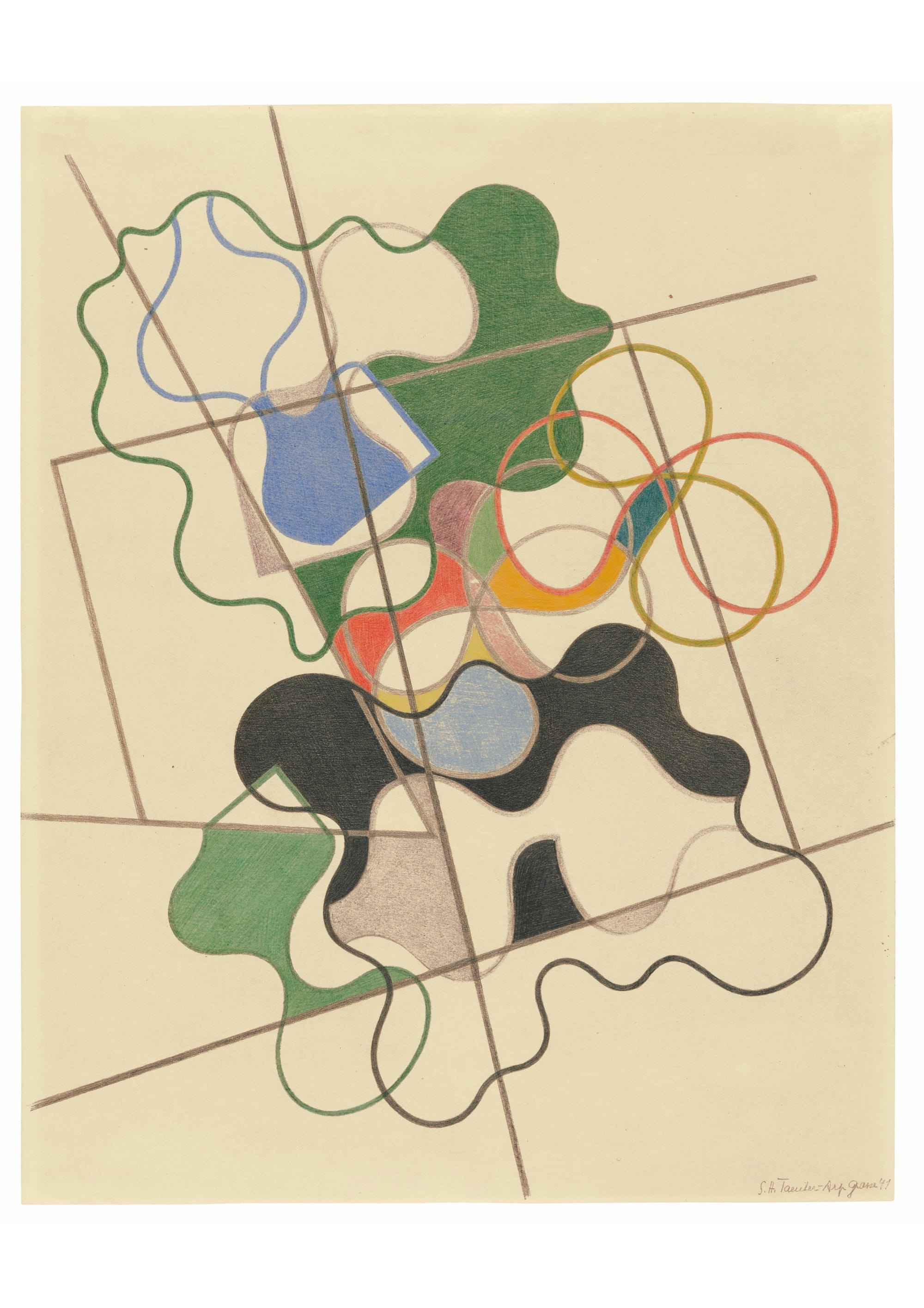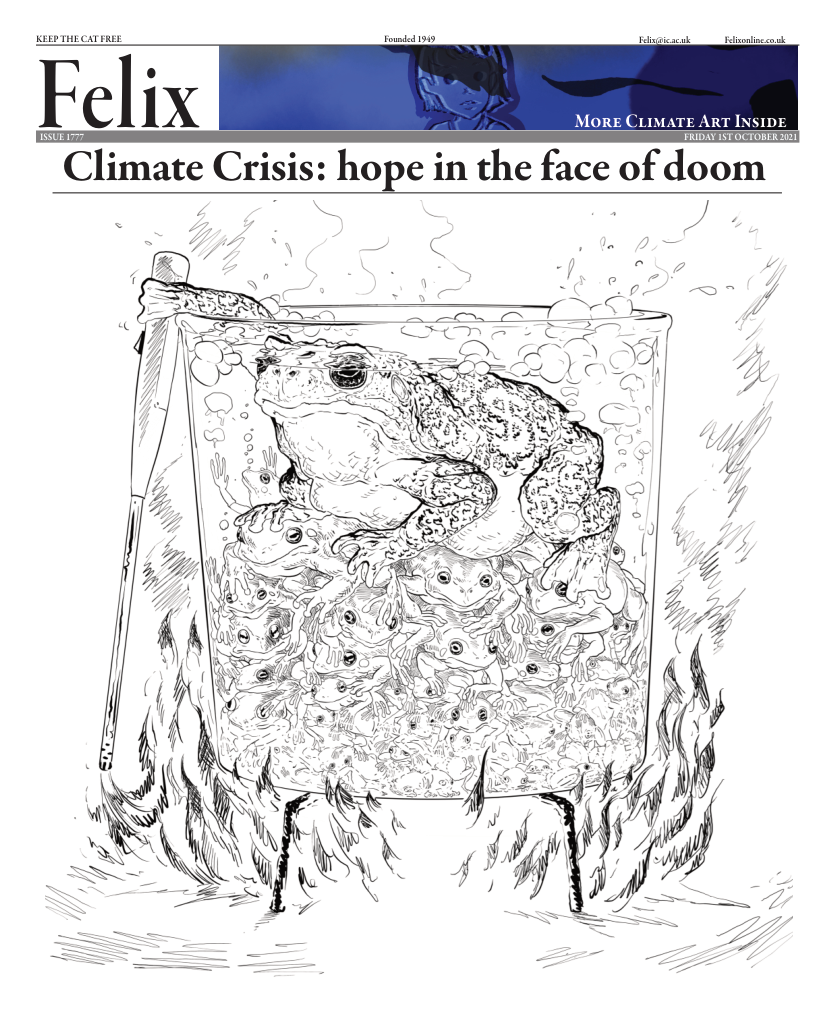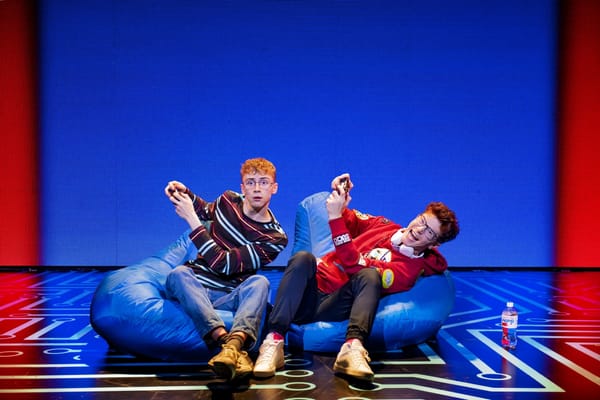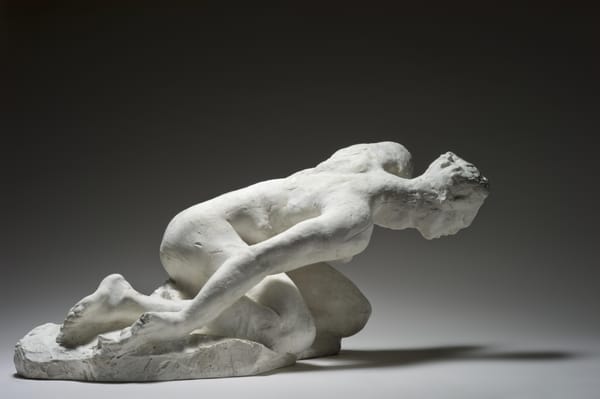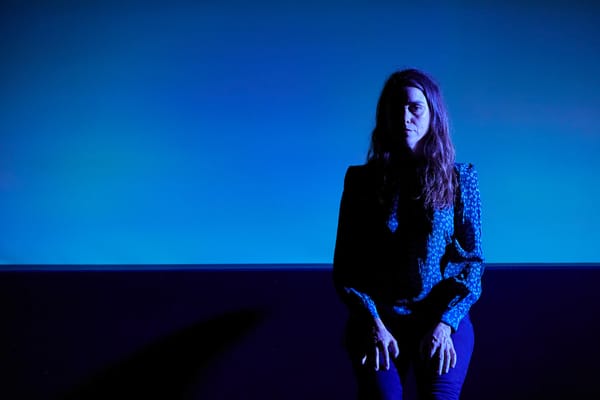Abstract Enough?!
800 words. 800 words written on an online website. 800 words extolling Tate Modern’s latest exhibition about Sophie Taeuber-Arp's work.
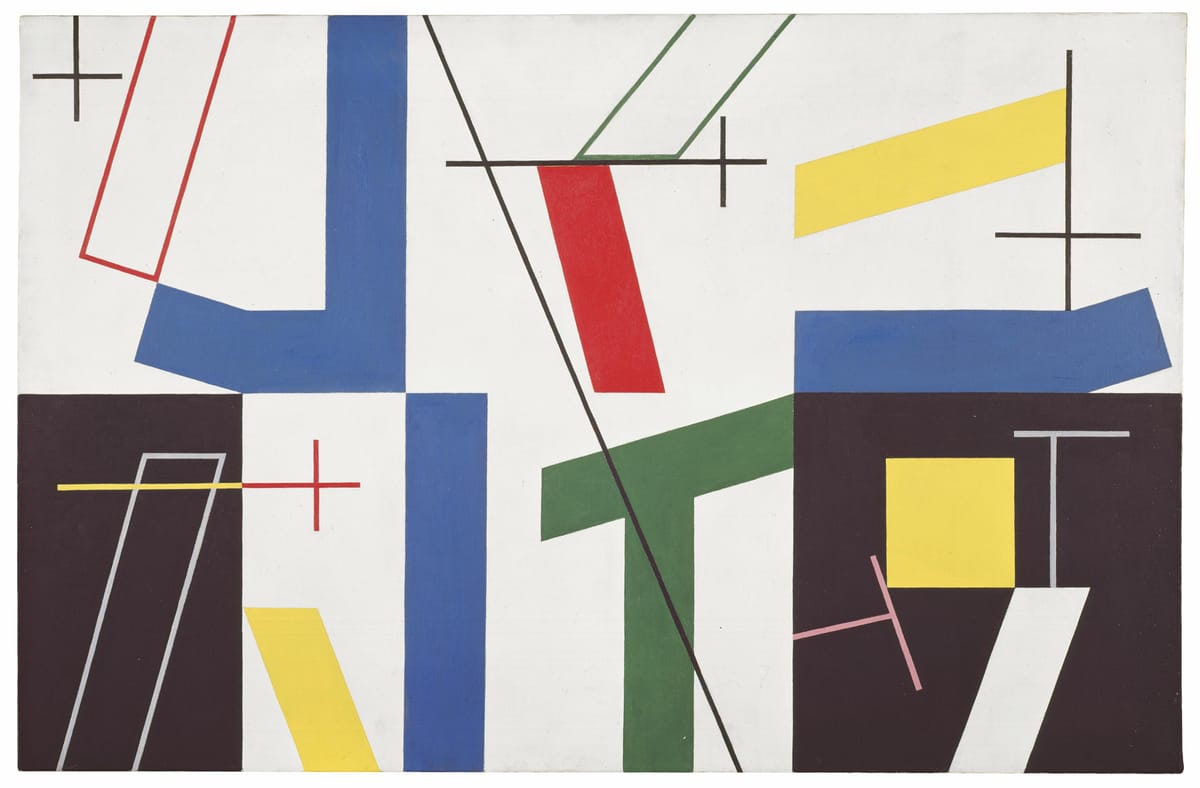
Sophie Taeuber-Arp
★★★★
- What: Art Exhibition
- Where: Tate Modern
- When: Until 17th October, 2021
- Cost: £16 (Students £14)
We’ve all seen her work. The quintessential Dada Head and the photograph (inset) destined forever to hang on the walls of trendy coffee houses and the homes of wannabe art connoisseurs studying at the Royal College of Art. Sophie Taeuber-Arp – the face behind the head and one of the leading figures of the early 20th century Dada movement - is perhaps lesser known. Pictured here, Taebuer-Arp is both figuratively hidden behind the Dada head and literally obscured by history’s preference for familiar tastes and (male) artists.
Born in Davos, Switzerland in 1889, Taeuber-Arp dabbled in everything from dance, sculpture, textiles, painting, jewellery, architecture, and furniture. Trained initially in textiles, workshops and later in modern dance, Taeuber-Arp revelled in the unconventional from the very beginning. The Dada Head, one of her early and most famous work speaks to this–resembling a lathe turned hat stand – it remains an almost comical abstraction of a human portrait captured unequivocally in the plane of an industrial tool. In time she established herself as a leading modern artist of the early 20th century. And as the first world war drew to a close, Taeuber-Arp's non-conformism found alignment with the Dadaist, a collection of artists who revelled in the radical and the abstract, part of a movement that emerged as a rebellion against all that lead to the horrors of the world war.
The comprehensive exhibition lays bare her repertoire with a carefully curated series of exhibits that expound her versatility not just with medium but also with evolving styles. The exhibition captures everything; From her work in textiles to her experimentation with house furniture; From three dimensional reliefs that look like futuristic jigsaw pieces to her lathe turned Dada heads; From her modern dance escapades to mini-puppets and set-design work for plays.
These lines and curves weave and interweave... creating and leaving behind patches of entrapped bright shades before ending abruptly at an apex.
Almost poetically the exhibition is bookended by contrasting styles: beginning with her experimentations with grids and rectangular spaces; to the closing section of the exhibition which focusses on her exploration of geometrical abstraction — filled with sharp lines and patterns, evoking some sort of unbridled spirit in each stroke that is almost in abject contrast to the rigidity of the earlier grid work! These lines and curves weave and interweave almost like her work on patterns in textiles, creating and leaving behind patches of entrapped bright shades before ending abruptly at an apex. The result in both types of work is an intricate mosaic of colours and shapes that continues to push the boundaries of abstraction in art.
In between these two sections, we see sprouts of her genius in other avenues, from the architectural design of her house to designs for textiles and necklaces.
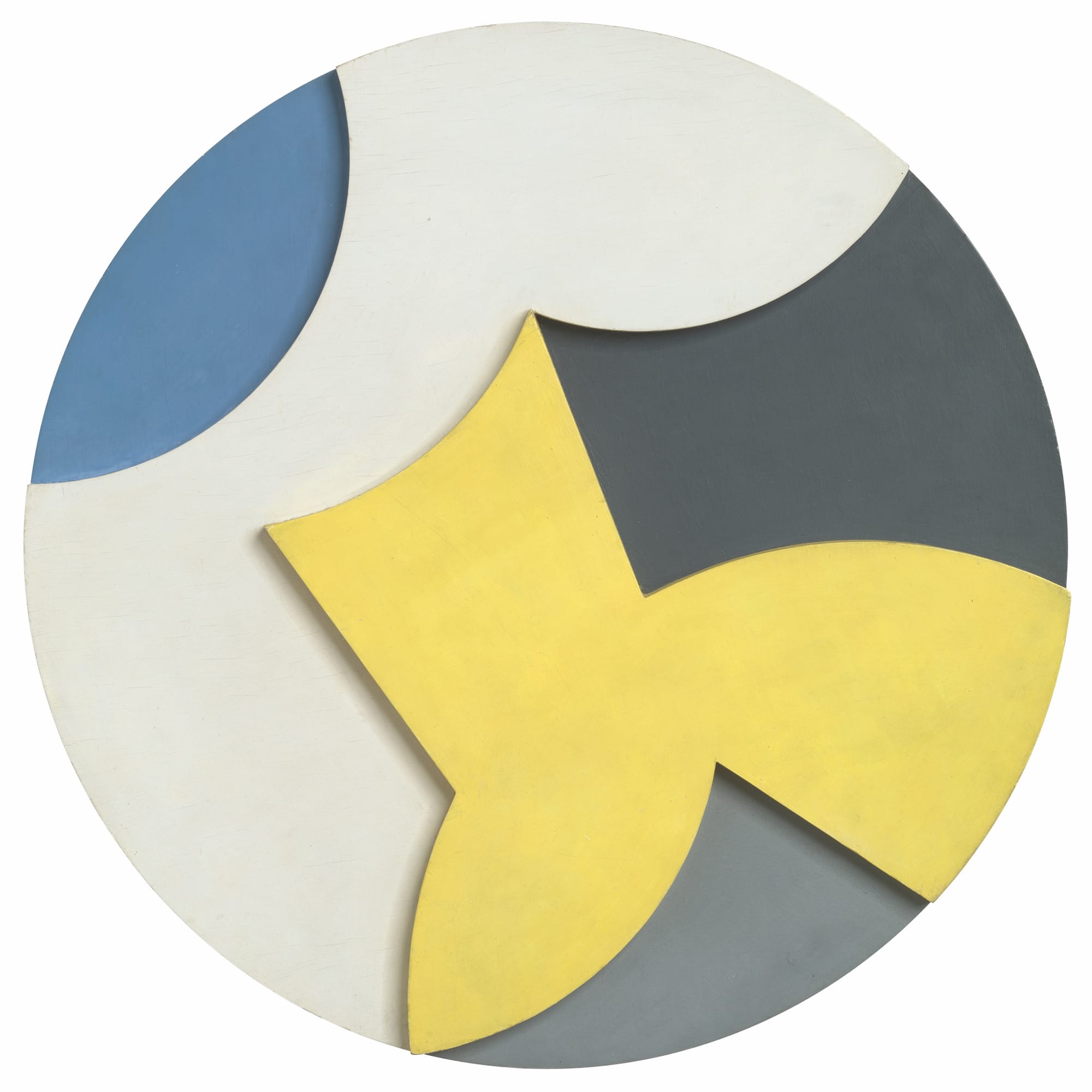
Perhaps no other work captures the ingenuity of the artist as her marvellous work on marionettes from 1918. Commissioned to produce the set design and puppets for the play “König Hirsch” (The King Stag) by Carlo Gozzi, Taeuber-Arp masterfully applied clean geometrical shapes, bright colours, and considerate use of sharp edges to render her version of playful three-dimensional Cubism.
While these are certainly highlights, the exhibition puts it best foot forward in contextualising and appreciating the work within. There is an ever-present danger in curating an exhibition featuring (pretty much) the entire repertoire of an abstract artist. Sketches and thematic works can shine a spotlight on the artistic process unlike any single piece of work ever can. These can be used masterfully to cast an incisive perspective into the evolution of an artist’s work; or it can come across as nothing more than a collection of exhibits with no story — thrown together and tied loosely, if at all, by only the association in name. Whilst the exhibition does certain sections well (particularly those covering her textile work), it is undeniable that whilst covering some themes, this exhibition at the Tate Modern veers into the disorganised and self-indulged. Perhaps it’s a little unkind to the modern art exhibition (particularly one of this scale) to expect more than what some exhibits have to offer themselves. After all, what can one do when most sketches are labelled perfunctorily as "Grid Patterns" and "Vertical-Horizontal Composition"? That being said, in an exhibition brimming with novelty and story, to labour this point would be to miss the forest for these (very) few trees.
Sophie Taeuber-Arp died, somewhat trivially, having evaded the Nazis and death during the war, due to an accidental case of carbon monoxide poisoning in Switzerland in 1943. Versatile and path-breaking, it is indeed a mystery how her work has evaded mainstream exhibition in the UK until now. This latest co-ordinated travelling exhibition (organised by the Kunst Museum Basel, Tate Modern and the Museum of Modern Art, New York) has finally brought the artist’s work to the UK until the 17th of October 2021. To miss it would be criminal!
